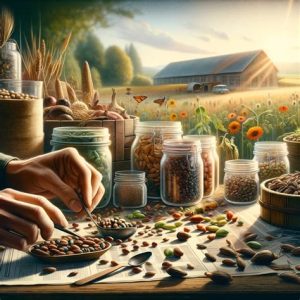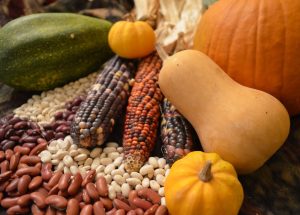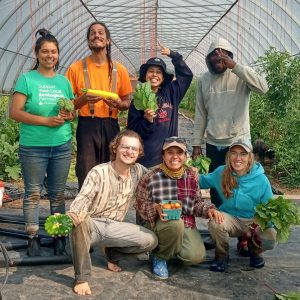What is Seed Sovereignty?
 Over the last 100 years we have lost over 75% of our agricultural diversity. In past generations, farmers would save and share their seed with one another, thus ensuring biodiversity and autonomy. Now that over 75% of our global seed supply, like our food supply, comes from corporations where some seeds – such as corn – are mostly genetically modified (GMO). These seeds are under strict regulations by the government under the guise of major corporations.
Over the last 100 years we have lost over 75% of our agricultural diversity. In past generations, farmers would save and share their seed with one another, thus ensuring biodiversity and autonomy. Now that over 75% of our global seed supply, like our food supply, comes from corporations where some seeds – such as corn – are mostly genetically modified (GMO). These seeds are under strict regulations by the government under the guise of major corporations.
Seeds purchased from commercial suppliers cannot be shared from farmer to farmer due to company patents. Many of these seeds have been developed to produce sterile fruit to ensure that the farmer must purchase seed each year instead of being able to save their seeds for future production. Government restrictions and corporate patents ensure ownership of seed and the global food supply.
“Seed sovereignty reclaims seeds and biodiversity as commons and public good. The farmer’s rights to breed and exchange diverse open sourced seeds which can be saved and which are not patented, genetically modified, owned or controlled by emerging seed giants.” — Vandana Shiva, Global Seed Ambassador, Navdanya
Seed sovereignty is about farmers, seed keepers, peasants, and other food producers having the capacity and right to save, grow, sell and share their seeds.
The Lexicon of Sustainability defines seed sovereignty as “The farmer’s right to breed and exchange diverse open source seeds which can be saved and which are not patented, genetically modified, owned or controlled by emerging seed giants.”
When small scale, homesteaders and indigenous farmers are empowered to take control of their seed security, they build seed sovereignty. Keeping seeds in the hands of farmers while maintaining a high diversity of seeds is critical for building resilient food systems in the face of climate change.
The Importance of Indigenous Seed Saving
 Seed saving enables Indigenous communities to get back to their roots and to reconnect with Mother Earth. Saving seeds holds spiritual significance for Indigenous peoples. Seeds are understood as living beings from which humans are descended and with whom humans hold a reciprocal, if not symbiotic, relationship. Therefore, with seeds as their relatives, “members of an extended family,” Indigenous peoples must take care of them by preserving them for future generations. Returning seeds to Mother Earth, their original home is sometimes referred to as “seed rematriation.”
Seed saving enables Indigenous communities to get back to their roots and to reconnect with Mother Earth. Saving seeds holds spiritual significance for Indigenous peoples. Seeds are understood as living beings from which humans are descended and with whom humans hold a reciprocal, if not symbiotic, relationship. Therefore, with seeds as their relatives, “members of an extended family,” Indigenous peoples must take care of them by preserving them for future generations. Returning seeds to Mother Earth, their original home is sometimes referred to as “seed rematriation.”
Seed banks and seed sanctuaries are vital repositories to protect the genetic diversity of food crops on the planet. They are intended to protect seeds for the future. There are seed sanctuaries operated by collaboratives, such as the Native American Seed Sanctuary, which involves Akwesasne, the Hudson Valley Farm Hub, the Indigenous Seed Keepers Network, and until the end of May 2021, Seedshed. Indigenous nations have also developed their own seed banks, such as the Cherokee Nation Seed Bank and the Kenhte:ke Seed Sanctuary and Learning Centre; the latter is managed by Ratinenhayén:thos in Tyendinaga Mohawk Territory. The most significant seed bank on the planet is the Svalgard Global Seed Vault, located in Norway, which securely stores the world’s food crop diversity. The Cherokee Nation was the first Indigenous nation to contribute seeds to the vault.
The International Treaty on Plant Genetic Resources for Food and Agriculture, often referred to as “The Seed Treaty,” is “a global agreement on sharing and caring for seeds.” The Seed Treaty serves to ensure that there is genetic diversity in seeds for the world’s food; however, the treaty does little to protect Indigenous knowledge about the seeds, nor does it protect against commercial exploitation. Clear documentation and agreements are needed when seeds are first collected and deposited in seed banks in order to reinforce Indigenous peoples’ seed rights.
By Leela Viswanathan of the Indigenous Climate Hub



